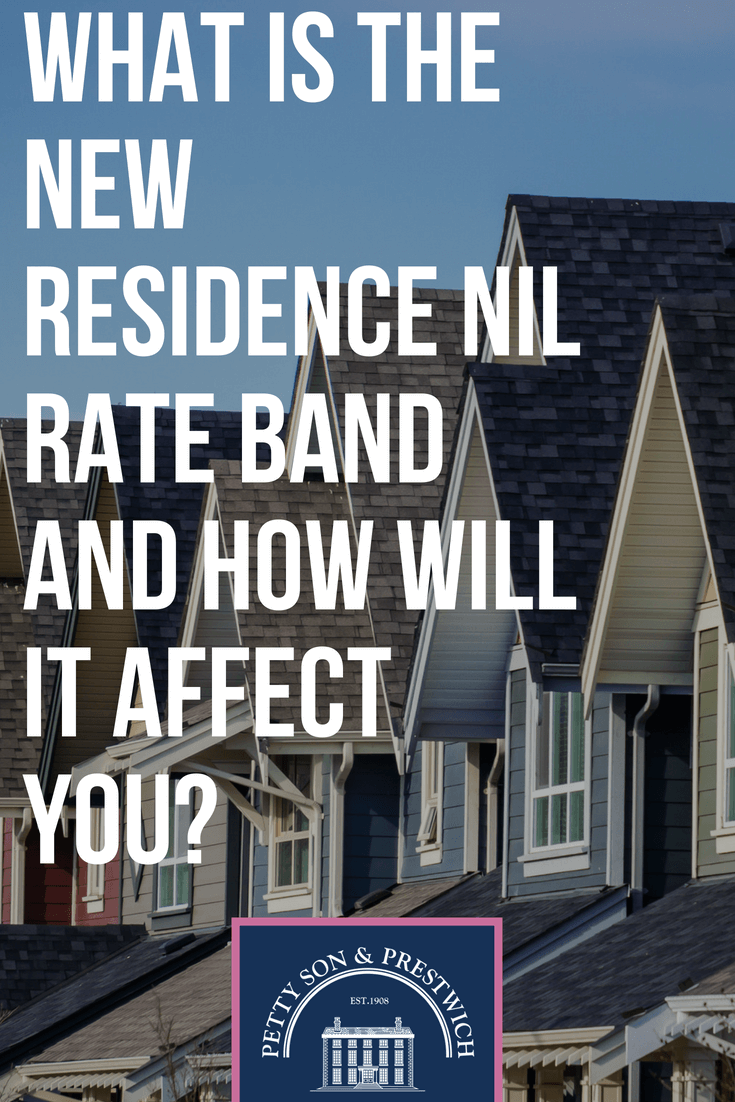The inheritance tax exempt allowance known as the Nil Rate Band has been fixed at £325,000 since 2009. Married or Civil Partnered couples can combine their joint allowances so that they have a combined allowance of £650,000 on the death of the survivor.
The new Residence Nil Rate Band (RNRB) was introduced from April 2017. Initially it will be set at £100,000 and it will increase by £25,000 a year until it reaches £175,000 in April 2020. When coupled with the standard nil rate band the RNRB will potentially allow individuals to pass on a total of £500,000 before IHT becomes payable. Provided the necessary conditions for the RNRB are satisfied a couple will therefore be able to leave their family £1 million free of IHT on the survivor’s death. Just like the standard nil rate band any unused RNRB on the first death will be transferable so that it can be used on the second death even if the first death occurred before April 2017.
However, there are conditions attached to the relief. Firstly, RNRB is only available to those who held a qualifying residential interest. Put simply they must have owned or part owned a property that was their residence. This cuts out the relief for buy to let investment properties but does allow executors to select which property to use where there are two residences. There are provisions to cover downsizing and relocation into a nursing home that allow the sale proceeds to be included in the allowance. However using equity release will affect the value of the relief as only net value of the property will be included.
Secondly, the property must be ‘closely inherited’ which means lineal descendants, children or grandchildren. Nephews and nieces or brothers and sisters are not included in this definition but it does include the widows of any lineal descendants.
Finally, the RNRB is subject to a taper provision for large estates over £2 million. Estates over this threshold will see the relief reduced by £1 for every £2 that the estate exceeds the threshold. This means that estates over £2.2 million will lose the relief altogether. As the relief increases so will the threshold so by 2020/2021 estates over £2.35 million will not benefit from RNRB.
What do you need to do to ensure that you qualify for the relief?
To start with, revisit your will. Before 2007 many people drafted discretionary trust wills to allow half the residential property to be put into a trust on the first death. This was done so that a couple could use both standard nil rate bands. Since 2007 using a trust like this is no longer necessary because any unused allowance can now be transferred to the survivor’s estate on application by the executors. If your will contains a discretionary trust then you need to consider whether to amend your wills to remove it. A trust is not a lineal descendant and may disqualify the estate from the RNRB.
If you are considering downsizing make sure that the surplus sale proceeds remain clearly identifiable in your estate in a separate account or investment. If you are using the funds to pay for a nursing home then use other funds first in order to preserve the relief for as long as possible.
At Edwards Duthie we are offering a 25% for anyone who comes in to review their wills in light of the RNRB. Just mention this article when booking your appointment.
Liam Gough is the Head of the Private Client Department at Edwards Duthie. The firm has offices in Wanstead, Ilford and Stratford and can be contacted on 0208 514 9000.
